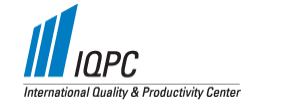Pharmaceuticals




The United States and China are the world’s two largest pharmaceutical markets, accounting for 38.3% and 17.5% of the global market respectively. In the second quarter of 2020, China’s pharmaceutical industry recorded a 4% year-on-year growth, hitting 607.5 billion yuan. The aging population and the corresponding increase in the prevalence of chronic diseases, as well as the adoption of preferential policies is driving the growth of pharmaceuticals in China.
Daxue Consulting has robust experience in pharmaceuticals market research for companies producing vitamins, supplements and drugs, as well as those providing health insurance in China. Our health industry projects have included distributor analysis to find the best way to reach consumers, social media listening and competitor analysis.
The size of the Chinese pharmaceutical market increased from US$161.8 billion in 2013 to US$211.8 billion in 2017 and it is expected to reach US$330.5 billion in 2022, with a compound annual growth rate of 9.3% during this period.
Biologics currently represent the most profitable pharmaceutical segment in China since it is one of the fastest-growing sub-sectors in such field. Driven by a growing healthcare expenditure, enhanced R&D capabilities, active changes in government policies, and increased capital investment, the Chinese biopharmaceutical market has developed remarkably fast in the past few years and its growth rate has surpassed that of the global market.
In 2016, China’s biopharmaceuticals boasted a market size of 152.7 billion yuan. Between 2016 and 2021, biologics maintained a compound annual growth rate of 16.4%, reaching a market size of 326.9 billion yuan by 2021, and they are likely to continue to grow strongly in the years to come.
As a new subdivision of biological drugs, antibody drugs is undergoing a rapid development. The market size of monoclonal antibodies drugs in China was 9.1 billion yuan in 2016. Forecasts predict that from 2016 to 2021, it will continue to grow at a compound annual growth rate of 25%, reaching a market size of 27.6 billion yuan in 2021.
According to data released by the General Administration of Customs, in the second quarter of 2020, China’s drug exports recorded a 53.8% year-on-year increase, reaching approximately US$3.7 billion. During the same period, with the recovery of domestic production, pharmaceuticals imports had a meagre 0.5% year-on-year rise, hitting US$8.5 billion.
In 2018, sales in China’s physical and online pharmacies (including drugs and non-pharmaceuticals) reached 610.6 billion yuan. In details, online sales increased from 3.9 billion yuan in 2013 to 90.5 billion yuan in 2018, and their market share has continuously increased jumping from 1.2% to 14.8%.
According to Minaiwang, traditional Chinese medicines cover 13 treatment categories. Cardiovascular and cerebrovascular medications are the best-selling category in the Chinese medicine market, occupying 35% of the market share. Then follow respiratory drugs, accounting for 14.67%, and skeletal muscle relaxants, accounting for 8.58% of the total sales. Chinese traditional medicine production is mainly concentrated in Jilin, Liaoning, Hebei, Ningxia, Gansu, Hubei, Anhui, Hunan, Guangxi, Guangdong and Yunnan.
Between 2011 and 2015, China’s traditional medicine market vaunted a compound growth rate of 16.8%. Then, from 2016 to 2020, traditional Chinese medicine industry continued to develop rapidly and by 2020, the market size reached 580.6 billion yuan, with a compound growth rate of 8.2%.
Chinese herbal medicine market has increased from 151.84 billion yuan in 2018 to 172.52 billion yuan in 2019. By 2020, the transaction volume of Chinese herbal medicine market hit 191.9 billion yuan.
In 2019, China produced about 349,000 tons of vitamins, recording a 4.4% rise compared to the previous year and accounting for 77% of the global production. The export volume of vitamins from China in 2019 amounted to about 269,000 tons, exhibiting a 6.7% year on year increase, while the export value hit $ 2.83 billion, representing a reduction of 16.3% compared to the previous year. Instead, the overall market size of the vitamin industry in China in 2020 was 3.7 billion US dollars, which is 6.4% more than a year earlier.
The price of vitamins in the market rose sharply from 2016 to 2018, attracting the attention of investors and resulting in an intensification of industrial and financial capital. Calcium pantothenate, vitamin D3, vitamin B6, vitamin B2, folic acid, vitamin B12, and vitamin C are some of the most popular vitamins.
The outbreak of COVID-19 caused the interruption of production activities and disrupted the supply chain of pharmaceuticals in China during the first quarter of 2020, pushing the country to rely more on imported drugs. To solve this problem, the government urged domestic pharmaceutical companies to resume work and increase production starting from the end of March 2020. Moreover, beyond increasing supply, pharmaceuticals in China got more research and development funds in vaccine research and traditional Chinese medicine.
The net profit of Shanghai Pharmaceutical Holdings Co., Ltd. in the second quarter of 2020 increased by 20.2% year-on-year, indicating a rapid recovery after the COVID-19 outbreak in China. However, in the second quarter, many other large pharmaceutical companies saw their profits decline compared to the previous year due to the impact of the pandemic.
At the end of the second quarter of 2020, there were 9,038 companies operating in China’s pharmaceutical industry, compared to 8,659 in 2019. However, the number of loss-making companies increased from 1,634 to 2,100.

